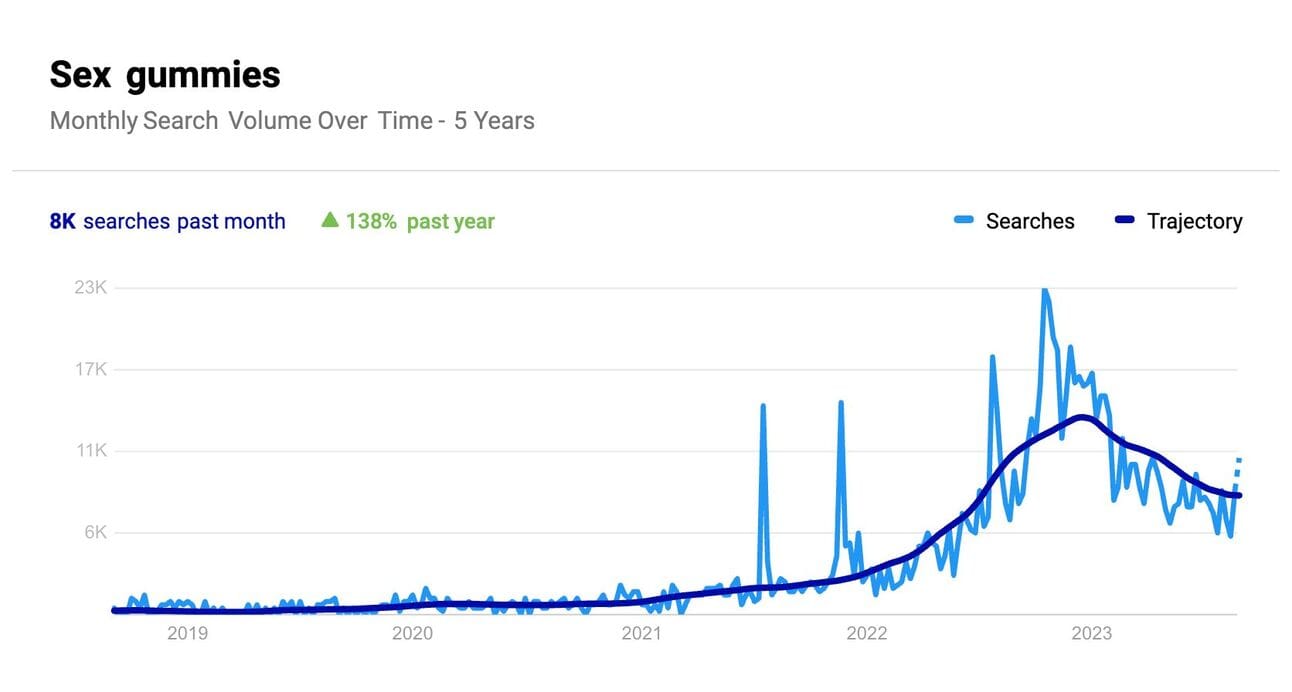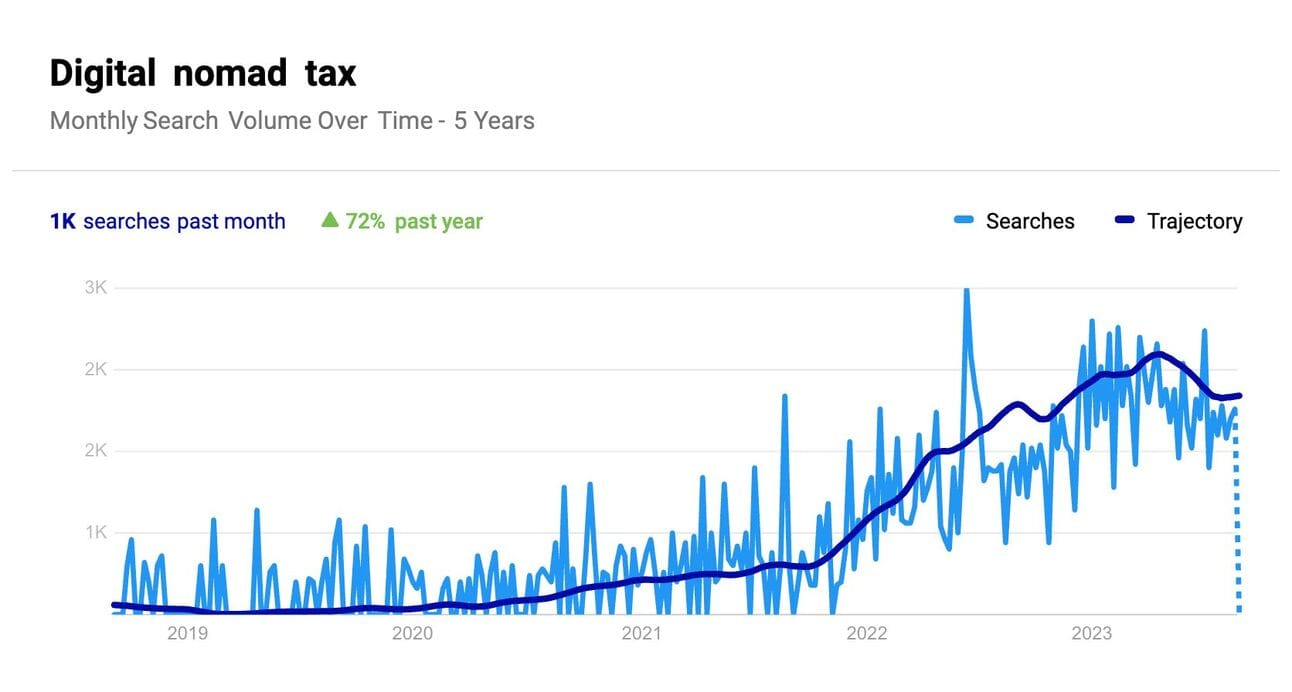🗂 Overview
With the rising cost of living, many people are looking to cut back on unnecessary spending. Gyms, especially in big cities, can be ridiculously expensive and an increasing number of people are looking for free or cheaper alternatives to stay fit.
Calisthenics has emerged as a leading alternative for many people. For those unaware, it’s a form of exercise that uses only bodyweight movements to build strength, endurance, flexibility, and coordination. It involves performing various exercises such as push-ups, pull-ups, squats, and planks.
Today we’re going to explore ways you can capitalise on this trend but first here’s a newsletter I think is worth checking out.
👀 Things worth checking out
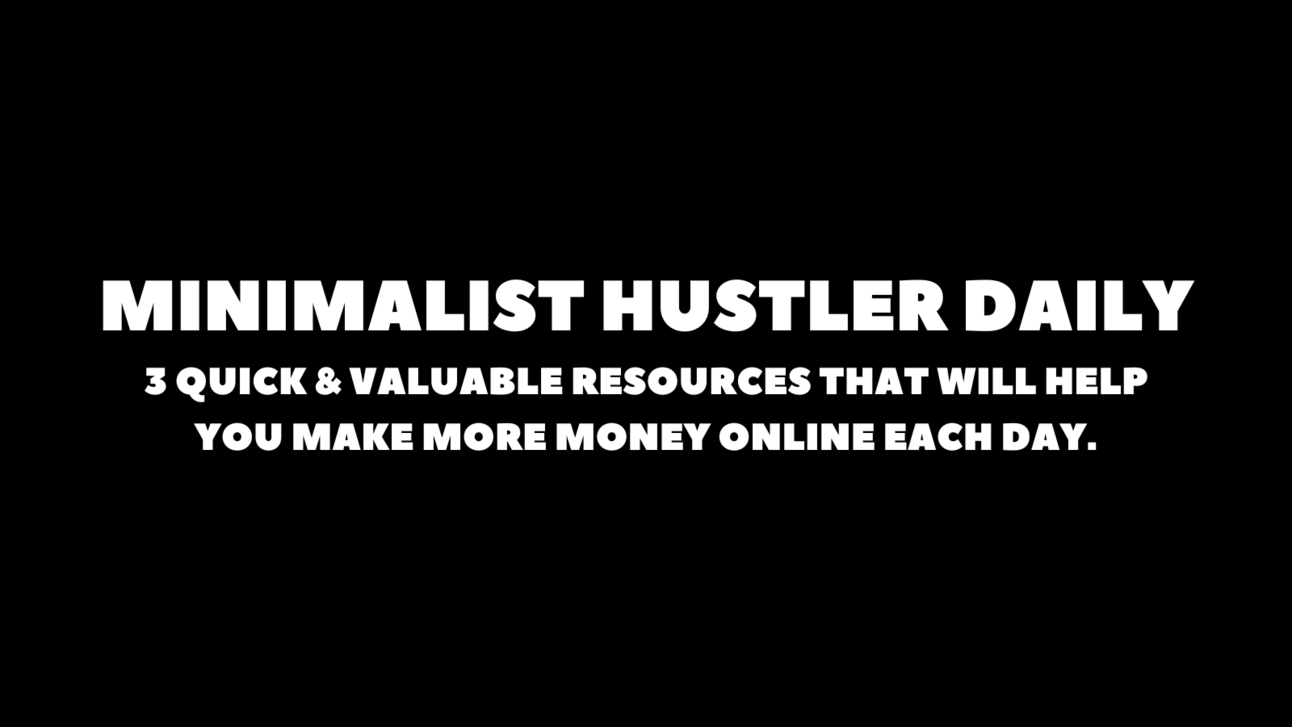
Increase your online income with 3 quick resources every day.
Join 4350+ online hustlers in receiving a daily email with 3 quick & valuable resources that will help you make more money online.
📈 Stats
14% of people in the UK (~10m people) are currently a member of a gym. A further 19% are planning on joining a gym in the next calendar year. (source)
According to Statista, the global health & fitness club industry is worth $96.7 billion in 2022. It’s expected to grow another $35.2b by 2028.
According to WHO, 2.8 million people die each year as a result of being overweight or obese.
🧮 Trends
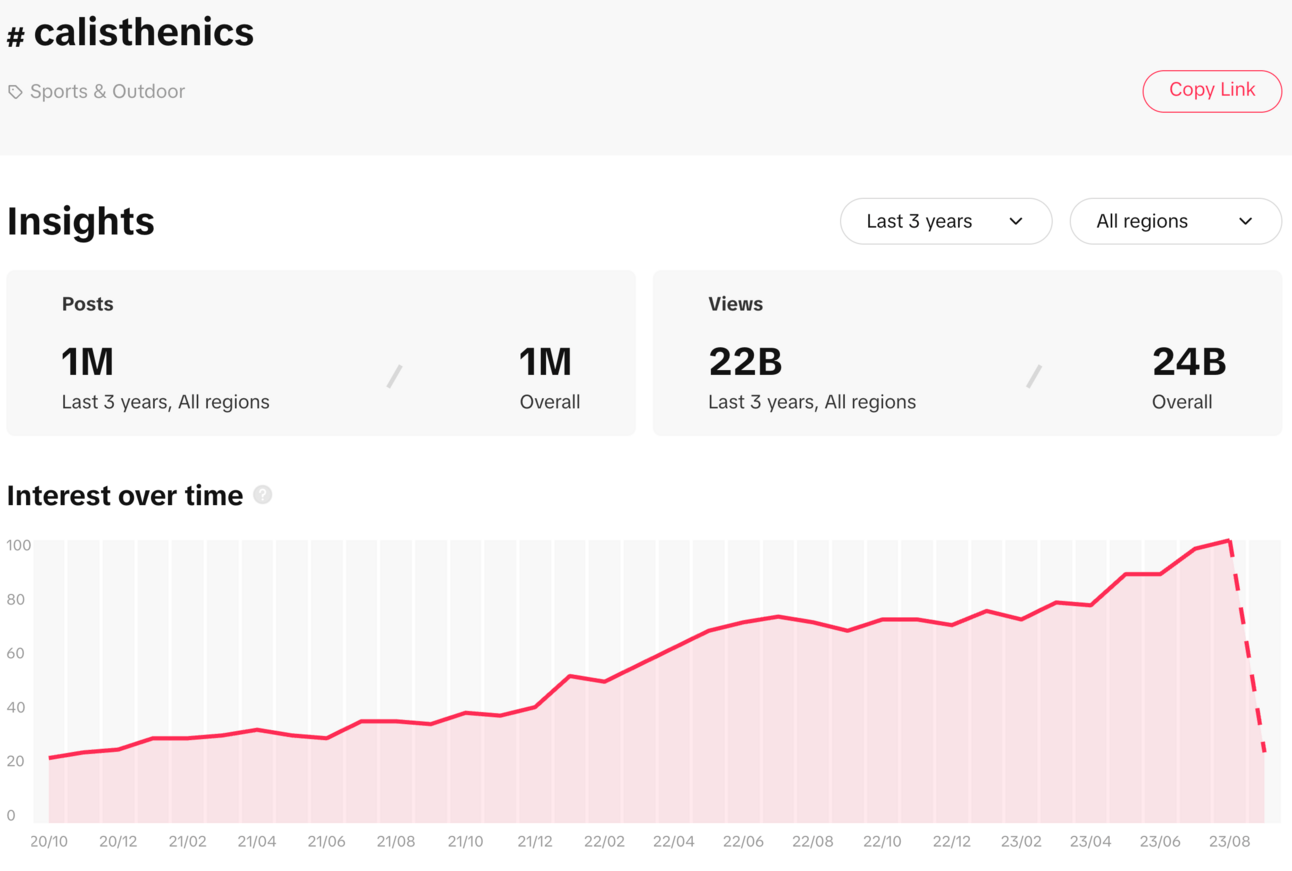
The TikTok trend for the hashtag # calisthenics. The dotted line is due to incomplete data as it’s too recent.

This is for web search only. Searches for Calisthenics are also up 18% on YouTube.



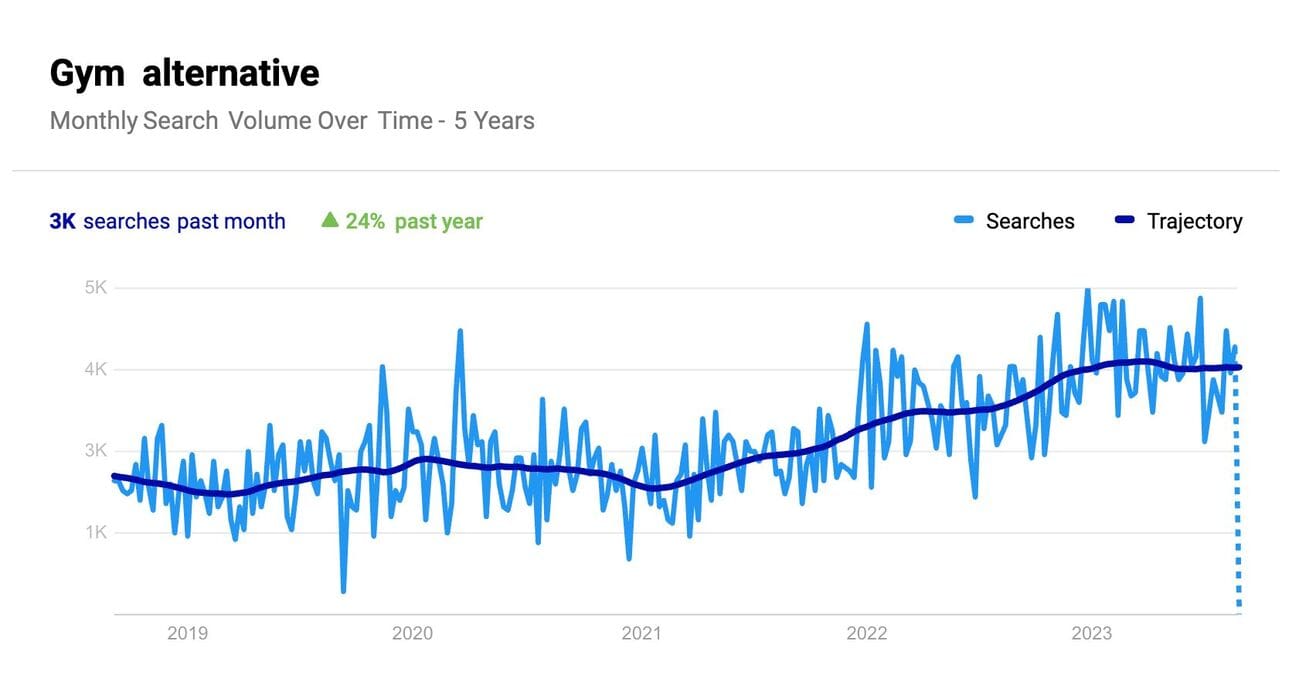

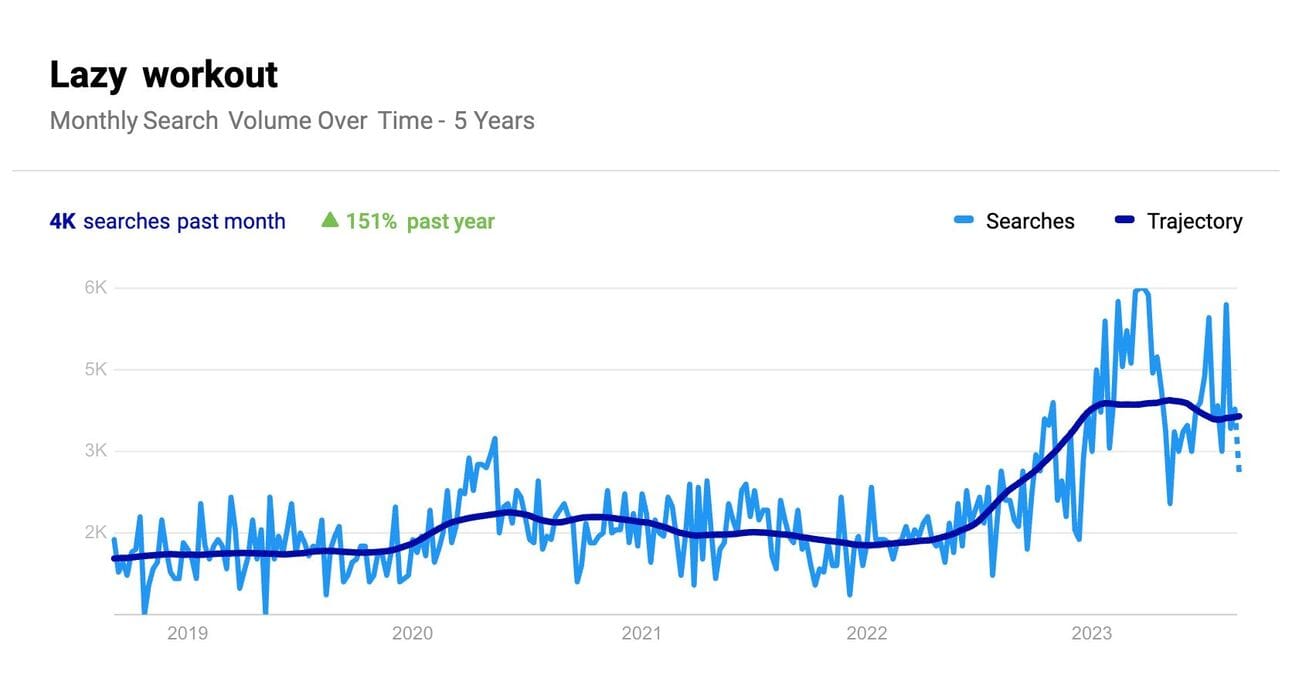
⭐️ Examples
Mirafit sells a range of gym equipment and accessories, including calisthenics.
MadMuscles is an app for tracking fitness progress and devising personalised workout plans.
Gornation sells premium calithentics equipment and clothing.
Whoop creates high-end wearable tech for fitness and in 2021 had a valuation of $3.6b.
Ironmaster built a side venture into a home gym equipment brand making $9m/year.
Thor Fitness Europe is a $12k/m CrossFit gear brand
The LOOK Fitness is a fitness studio making $480k/year
👎 Problems
The main problems I’ve noticed with the fitness industry:
Gym memberships can be expensive but people don’t have space for home gyms or at-home fitness equipment.
Rigid memberships at some gyms lock customers into contracts or make it difficult to cancel.
Misinformation, Conflicting information, and echo chambers regarding fitness advice and best practices.
It can be very daunting for people to start going to gyms if they aren’t already fit.
Keeping users engaged and accountable to continue going to the gym or using their fitness apps. If people don’t see quick progress or get too busy it’s easily cast aside.
💡 Opportunities
Calisthenics gyms:
With the rising cost of gyms and the increasing popularity of calisthenics, it’s rare to see calisthenics-only gyms.
These types of gyms would be much cheaper to run as you wouldn't need the majority of the expensive equipment found in regular gyms plus you’d likely be able to use a much smaller space.
This means you’d be able to charge less than a regular gym membership. You can also still charge extra for training sessions, programs and classes.
You can also differentiate by adding martial arts studios/classes as there’s likely a big audience overlap.
Beginner-friendly gyms:
Create gyms specifically targeted at beginners, offering an unintimidating environment, beginner classes, and progressive programs.
It doesn’t necessarily have to be a beginners-only gym but you could have a space in the gym specifically set aside for beginners.
To make it as beginner-friendly as possible, include free access to 1-on-1 training into the memberships.
Calisthenics equipment:
Create a direct-2-consumer calisthenics equipment & accessories brand.
This type of equipment is quite readily available but just because there’s already competition, doesn’t mean you can’t start a successful business too. If that were the case there would be no Nike, Adidas, Puma, Reebok, Slazenger, New Balance, Fila, Lululemon, Champion, Brooks, Gymshark, Asics, you get my point.
The fitness industry has been saturated for years but still, brands like GymShark and Lululemon emerge and get valued in the billions. The industry grows every year and new opportunities are constantly arising - and calisthenics could be the next big thing.
You just need to think differently and create unique selling propositions or sell in less competitive geographic regions.
According to SimilarWeb, Gornation (mentioned in the examples section) has 280k monthly website visitors, targeting the big European countries and the USA.
Find ways to create differentiated products in this space. Create a stylish brand that offers great quality products at an affordable price.
Try and design space-saving, easy-to-store, modular fitness equipment that can be used in small apartments or homes.
Other ideas:
Reimagine gyms - Do gyms really have to be the way they are? Can you make them cheaper, more private, less crowded but still profitable, or more engaging?
Smart at-home gym equipment - Think Whoop but for equipment - Mirror.co got bought out by Lululemon for $500m. Since Mirror became so popular, loads of competitor brands have popped up and successfully gained large valuations.
Fitness Content - There’s a plethora of fitness content out there on YouTube, TikTok & IG but new massive accounts emerge every day. How can you niche down or do something differently here?
🛠 How to build it
Do local market research before opening a gym, especially a niche gym. You want to be sure there are enough people in a close enough distance that are interested in joining a gym and in particular a speciality gym.
Learn the ins and outs of running a gym before starting one (obviously). What insurance is needed, how big will it need to be, what will the running costs be, how much staff will you need, do you need permits in your area, how to structure memberships, etc
Create the branding, how you do this is up to you and your chosen target market. You’ll be well educated in your target market if you did the right market research as mentioned before.
If you’re selling equipment, create a Shopify brand and start with one or 2 MVPs first to test the market before expanding your product line.
🚀 How to grow it
Local Marketing - If you’re going to start a gym, local marketing through flyers, events, pop-ups, and street marketing can be super effective ways to get customers early on.
Social Content - Create fitness content and build an audience on TikTok, YouTube, IG, Pinterest. Fitness content is super easy to make and there’s loads of information out there already that you can adapt/improve on.
Influencer Marketing - Find influencers or big accounts in this niche and work with them to market your products across their audience. Create long-standing relationships with these influencers like Gymshark and Lululemon.
Partnerships - Alternatively, you can even work with influencers to create a collaborative product/service.
Paid Ads - Undoubtedly, paid ads will be vital in growing your fitness brand. Use Google, TikTok & Meta.
👍 Tips
Look at what’s already working in the industry and add to it. Find how you can make it better by looking at reviews and testing the products for yourself.
In an industry full of information (good & bad) you need to make sure your products & services are as high a quality as possible in order to maximise the potential for success
📚 Helpful resources
🚦 Signals
Interesting trends I’ve noticed this week that aren’t related to this week’s newsletter topic. Get a sneak preview of 7 emerging trends I’m looking into for future emails.
🔐 This section is only visible if you have referred 3 subscribers to this newsletter. Your unique referral link is at the bottom of the email. need your help grow this newsletter to keep the content free. 🔐




